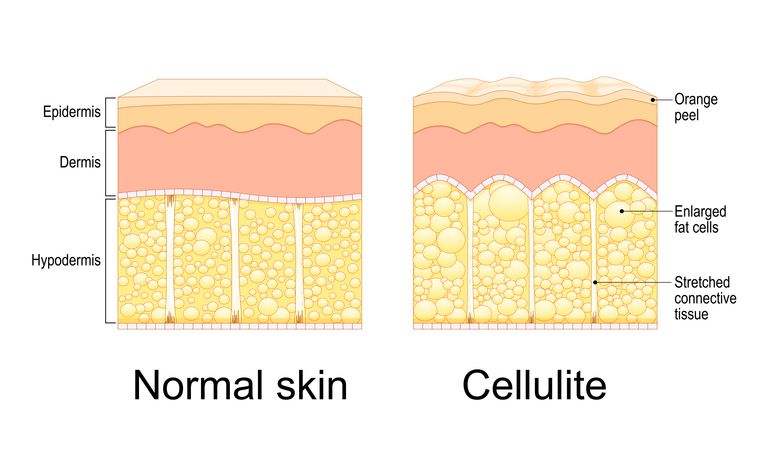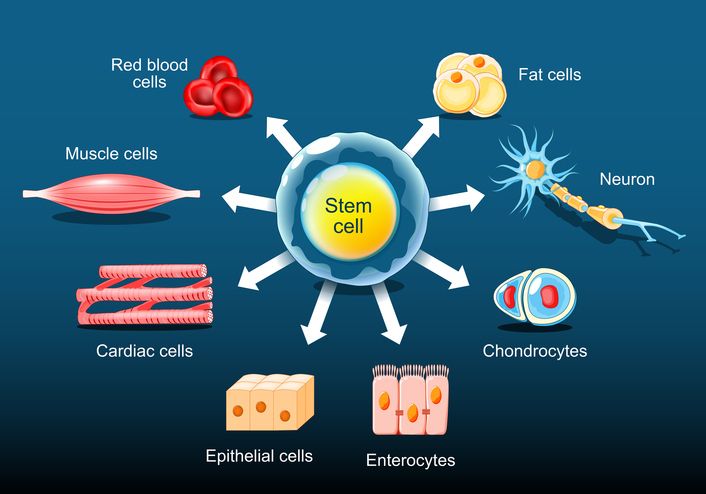
Author: Natalie Ng|Updated: 16 June 2025
Hairline breakage often starts with small signs—shorter, thinner hair strands around the edges that don’t grow as they should. This can happen for many reasons, including heat styling, tight hairstyles, brushing wet hair too harshly, or using chemical treatments and hair dyes often. Some hair types are more prone to breakage, especially if the hair is already dry, brittle, or damaged. You can repair hairline breakage at home by making small changes in how you care for your scalp and hair. Using natural oils like coconut oil or olive oil, adjusting how you handle damp hair, and protecting the hair shaft from further damage are all simple ways to support healthy hair growth. If you’ve been noticing more split ends, dull hair, or thinning hair along your edges, keep reading. These nine home remedies are easy to follow and can help prevent breakage, repair damaged hair, and support smoother, stronger hair over time.

Hairline Breakage Repair Remedy 1: Essential Oil Scalp Massage for Healthier Edges

A regular scalp massage using essential oils can support healthier hair growth and reduce breakage around the hairline. While it won’t reverse existing hair damage, this method helps create better conditions for the scalp by increasing circulation and nourishing the hair follicles. This massage acts as a natural hair treatment for promoting hair growth.
Effectiveness in promoting healthier hair
This treatment works best as part of a long-term hair care routine. Essential oils like rosemary oil and tea tree oil contain natural compounds that may reduce scalp buildup and help protect hair follicles. Combined with a gentle massage, this approach can support stronger, more resilient hair along areas prone to breakage.
Over time, the improved blood flow may lead to better nutrient delivery at the roots, which helps promote hair growth along the hairline, helping reduce thinning hair and improving the overall strength of growing strands. This can help prevent breakage along the edges, especially if the hairline has been stressed by heat styling tools, tight hairstyles, or previous hair colouring.
Application method
• Mix 2 to 3 drops of rosemary oil or tea tree oil
• Add to 1 tablespoon of a carrier oil like coconut oil or olive oil
• Massage into your scalp using light, circular motions for 5 to 10 minutes
Use your fingertips only and avoid pressing too hard. Tugging or rubbing can worsen hair breakage, especially on fragile or thinning areas.
This technique won’t regrow broken strands, but when used regularly, it helps support healthy hair growth and protects the scalp. It’s an easy treatment to include once or twice a week and works well alongside other natural remedies in your hair care routine.

Hairline Breakage Repair Remedy 2: Aloe Vera and Coconut Oil Treatment for Scalp Nourishment

Aloe vera and coconut oil form a deeply hydrating blend that can help improve the condition of a weakened hairline. While this treatment will not repair broken strands or reverse hair loss, it supports healthier hair by softening brittle hair and calming the scalp. Coconut oil is also valued for its anti inflammatory properties, which help soothe itchy or irritated scalp conditions. Over time, the combined ingredients work together to reduce dryness, protect the hair shaft, and support the scalp environment where healthy hair growth begins.
Benefits of this blend on the scalp and hairline
Aloe vera helps soothe irritated areas and supports the barrier around hair follicles. It cools the skin and adds moisture, which can help reduce dryness in areas prone to breakage. Coconut oil provides essential fatty acids that penetrate into the hair shaft, locking in moisture and improving hair elasticity.
Adding vitamin E strengthens fragile strands and may reduce hair shedding along the edges. Honey, a natural humectant, draws in moisture and coats the hair, helping to condition dull hair and reduce the chance of further damage.
Application method and timing
Mix the following ingredients in a small bowl until a smooth paste forms:
• 2 tablespoons of aloe vera
• 1 tablespoon of coconut oil
• 2 drops of vitamin E
• 1 teaspoon of honey
Use clean fingertips to apply the mixture directly to the hairline. Massage gently into the area without pulling on the hair strands. Leave the blend on for 30 minutes, then rinse thoroughly with lukewarm water. Leaving the mask on longer than recommended does not improve results and can cause buildup on the scalp.
This treatment can be used once or twice a week as part of a routine focused on preventing hair breakage and maintaining scalp moisture.
Read More
Book Now to Experience
F8 Hair Regrowth Treatment
1 Minute Self-Registration
Date should not be before minimal date

Hairline Breakage Repair Remedy 3: Rice Water Rinse to Strengthen Weakened Strands
Rice water is rich in amino acids, B vitamins, and antioxidants that can support the strength of fragile strands around the hairline. This method has been used for generations to support smoother, more manageable hair, especially in cases of thinning or breakage. When applied regularly, rice water can help reduce shedding and support better structure in damaged hair. For best results, consider using a clarifying shampoo or an apple cider vinegar rinse before the rice water treatment to remove product buildup and prepare the scalp for better absorption of nutrients.
Active nutrients and repair benefits
Inositol, a key compound in rice water, can absorb into the hair shaft and help reinforce areas weakened by heat styling, frequent hair colouring, or over-processing. This can improve the feel and appearance of damaged strands while helping to protect against further damage.
Amino acids strengthen the roots, while vitamin B and E work on the outer layer of the strand to reduce brittleness and help maintain hair elasticity. Over time, the starch in rice water coats the strands, which can reduce the appearance of frizzy hair and prevent breakage, especially around the hairline.
Preparation steps
• Rinse ½ cup of uncooked rice thoroughly to remove impurities
• Place in a bowl with 2 cups of water at room temperature
• Let soak for 15–30 minutes until the water turns cloudy
• Strain the liquid into a clean container and store in the fridge for up to 1 week
• Optionally, let the mixture ferment at room temperature for 24 hours before using
Dilute the rice water before applying, aiming for a light, coconut-water consistency.
Usage schedule and method
Use this rinse 1–2 times per week after shampooing. Apply it to damp hair, focusing on the edges and scalp. Let it sit for 15–20 minutes before rinsing and following with conditioner.
Monitor your hair’s response after each use. If strands start to feel stiff or overly coated, reduce use to once every other week to avoid protein overload.

Hairline Breakage Repair Remedy 4: Protective Styling Techniques to Reduce Tension
Protective styles help reduce direct stress on fragile hairlines. When used properly, they allow damaged hair to rest while maintaining scalp access for regular care. These styles are especially useful for areas prone to breakage due to repeated pulling, styling tools, or chemical treatments.
Reduced friction and lower manipulation
Loose buns, flat twists, and twist-outs protect the edges from friction while avoiding tension on the scalp. These styles don’t tug on the hair shaft, which helps prevent the type of breakage caused by tight braids or ponytails.
Using silk or satin scarves also plays a role in maintaining moisture and reducing friction. During sleep or long periods of wear, cotton fabrics can absorb natural oils and pull at brittle strands. Wrapping hair gently at night with a silk bonnet or scarf placed slightly back from the hairline helps shield the area without adding pressure.
Styling routine to prevent damage
• Choose soft accessories like fabric-covered scrunchies instead of elastic bands
• Avoid repetitive tight styles; rotate styles every 2 to 3 days
• Allow your hair to rest between styles to reduce long-term stress
• During the day, avoid tying hair tightly at the same spot repeatedly
• At night, wrap hair loosely using a silk or satin scarf
This method helps protect both the scalp and the ends of the hair while reducing hair fall caused by external strain.
Book Now to Experience
F8 Hair Regrowth Treatment
1 Minute Self-Registration
Date should not be before minimal date

Hairline Breakage Repair Remedy 5: Egg and Honey Mask to Strengthen Brittle Strands
This mask provides a concentrated mix of natural proteins and moisture-retaining ingredients that help improve the condition of weakened hairlines. As a nourishing hair mask, it helps restore moisture and repair damage along the hairline. Regular use can help restore softness, reduce brittleness, and support hair elasticity, especially in areas where breakage has been caused by heat styling, hair dyes, or environmental stress.
Ingredient function and targeted repair
Eggs contain proteins that bond to damaged areas along the hair shaft. This helps reinforce structure and adds strength to strands prone to snapping. Honey acts as a humectant, helping retain hydration in the hair while coating the outer layer to improve smoothness. Olive oil contributes essential fatty acids that soften rough texture and enhance flexibility.
Together, these ingredients help repair areas along the hairline where strands often become dry and prone to breakage. The mask supports better hair elasticity, helping the hair bend rather than snap under tension.
Full recipe and preparation steps
• 1 whole egg
• 2 tablespoons of raw honey
• A splash of olive oil or lemon juice
Whisk the egg until fully smooth, then mix in the honey and olive oil until the consistency becomes creamy and even. Apply the mask to clean, damp hair, focusing on the front hairline and areas with visible damage.
After applying the mask, cover your hair with a shower cap to trap heat and enhance absorption of the treatment. Let it sit for 20 minutes. Rinse thoroughly with cool water to avoid cooking the egg in the hair.
This mask can be used once weekly to help repair damage from styling tools and improve overall hair strength along the edges.

Hairline Breakage Repair Remedy 6: Scalp Massage to Stimulate Circulation Around the Edges
This method improves blood flow to areas where breakage is common, especially along the hairline. Regular scalp stimulation can help maintain a healthier environment around the hair follicles, supporting better nutrient delivery and stronger strand development over time.
Movement, pressure, and circulation benefits
Applying gentle, circular motions to the scalp encourages flow beneath the skin’s surface, helping supply oxygen and nutrients that support healthy hair growth. It can also help break down dead skin cells and relieve scalp tension that may contribute to hair fall.
This method is especially helpful for those with thinning hair or brittle strands caused by frequent styling or high-tension hairstyles.
Massage steps and routine integration
• Section the hair into four areas to ensure even attention
• Start at the crown and work outward in circular movements
• Use the soft pads of your fingers — never your nails
• Apply light to medium pressure for 5 to 10 minutes daily
Coconut oil or jojoba oil can be used during the massage for added nourishment, especially on dry or flaking areas. This method is easy to integrate into daily routines — during your morning break, while watching a show, or before bed.

Hairline Breakage Repair Remedy 7: Deep Conditioning with Natural Oils for Lasting Moisture
This method helps protect fragile edges by delivering moisture deep into the hair shaft. Natural oils contain nutrients that support smoother strands and reduce the risk of breakage caused by dryness, heat damage, or styling stress. Olive oil, in particular, is especially beneficial for nourishing and strengthening dry, thick hair.
Oil properties and moisture retention
Coconut oil helps reduce protein loss and penetrates the hair shaft to restore softness in areas where strands have become coarse or brittle. Jojoba oil closely mimics the scalp’s natural oils, making it effective for sealing in hydration without clogging follicles.
Together, these oils create a barrier that locks in moisture, shields hair from external stress, and improves the flexibility of the strand. This helps prevent split ends and strengthens areas that are prone to breakage.
Application steps and frequency
• Mix 2 tablespoons of coconut oil with 1 tablespoon of jojoba oil
• Warm slightly for better absorption
• Part the hair into small sections and apply the oil blend, focusing on the hairline
• Massage gently into the scalp and strands for 2 to 3 minutes
• Leave on for at least 30 minutes, or wrap with a warm towel overnight
This treatment can be used twice a week. It works well on damp hair after washing and supports both scalp comfort and strand resilience, especially when followed with a gentle rinse and air drying.
Book Now to Experience
F8 Hair Regrowth Treatment
1 Minute Self-Registration
Date should not be before minimal date

Hairline Breakage Repair Remedy 8: Gentle Hair Care Routine to Minimise Daily Stress
This method supports healthy hairline recovery by reducing the damage caused by everyday habits. Frequent heat styling, aggressive brushing, and tight accessories can weaken hair strands, especially around the edges. A gentle routine helps preserve the natural strength and flexibility of the hair. Styling with a lower heat setting, using heat protection products, and letting hair air dry whenever possible are key steps in preventing heat damage and breakage, helping to reduce the impact of hot tools on the hair shaft.
Hair handling practices that reduce damage
Using lukewarm water during washing helps prevent moisture loss in already dry or brittle hair. Massaging the scalp with fingertips during cleansing avoids irritation and maintains comfort at the root. After washing, patting the hair dry with a microfiber towel reduces friction that can lead to split ends or breakage.
For detangling, a wide tooth comb is the best tool. Starting from the ends and moving upward prevents unnecessary pulling on damp hair, which is more prone to breakage. Styling with lower heat settings, applying a heat protectant, and letting hair air dry whenever possible all help reduce the impact of hot tools on the hair shaft.
Daily protection habits
• Replace metal hair ties with silk scrunchies to reduce pulling
• Avoid tying hair tightly in the same area every day
• Sleep on a silk pillowcase or use a satin bonnet to protect hair from friction
• Allow damp hair to dry partially before styling

Hairline Breakage Repair Remedy 9: Hair Growth Diet to Support Stronger Strands
This method focuses on improving hair condition through daily nutrition. A steady supply of nutrients supports hair follicle function and helps reduce issues like hair shedding, brittle strands, and slow growth along the hairline.
Nutrient impact on scalp and strand health
Iron supports oxygen delivery to the scalp, which helps maintain energy and nourishment at the root. Low iron levels are often linked to thinning hair and weak growth. Omega-3 fatty acids help reduce dryness and flaking, improving scalp comfort and reducing the likelihood of irritation-related breakage.
Biotin strengthens the structure of each strand, supporting thicker hair growth. Vitamin C helps build collagen, which improves the flexibility and strength of the hair shaft while protecting against damage caused by environmental stress.
Key foods to include
• Spinach, lentils, and lean beef for iron
• Salmon, walnuts, and chia seeds for omega-3 fatty acids
• Eggs and almonds for biotin
• Citrus fruits and bell peppers for vitamin C
These foods support healthy hair growth over time and help protect hair from the inside out.
Book Now to Experience
F8 Hair Regrowth Treatment
1 Minute Self-Registration
Date should not be before minimal date

Avoiding Everyday Habits That Cause Damage
Many forms of hair damage begin with small, repeated habits. These daily choices can weaken hair strands over time and affect the health of the scalp and hairline. Chemical treatments, including frequent hair colouring or relaxers, weaken protein bonds in the hair. Hair color products and procedures can lead to damage, irritation, and hair breakage, especially along the hairline. Adjusting a few parts of your routine can reduce breakage and help protect fragile edges.
Common triggers that weaken hairline health
Excessive heat styling tools can dry out the hair shaft and reduce flexibility. Using curling irons, straighteners, or blow dryers without a heat protectant makes the hair more vulnerable to split ends and breakage. The damage is often most visible along the hairline, where strands are finer and more exposed.
Chemical treatments, including frequent hair colouring or relaxers, weaken protein bonds in the hair. This causes strands to become brittle and more likely to break, especially when combined with tight hairstyles that pull on the roots. Over time, this tension leads to thinning hair and visible gaps around the edges.
Small adjustments that protect hair
• Use a heat protectant spray before any heat styling
• Choose the lowest effective temperature on styling tools
• Reduce how often you dye or chemically treat your hair
• Rotate hairstyles and avoid pulling hair back in the same way each day
• Cover hair with a silk bonnet or scarf during sleep or when exposed to dry indoor heat or sun

Signs Your Hairline Needs More Attention
Hairline damage builds up gradually. Paying attention to early signs can help you adjust your hair care routine before the damage becomes more severe. Small shifts in texture, thickness, or appearance often show that the hairline needs extra care.
Early signs that suggest damage is developing
Short, uneven hair strands at the front of the scalp may indicate that the hair is breaking faster than it can grow. Thinning areas, especially near the temples or around the edges, suggest that the hair follicles may be under stress.
Frizzy hair around the hairline that doesn’t respond to conditioning can signal a lack of moisture. Dull hair and visible split ends are signs that the outer layer of the strand is weakening. Increased hair fall during brushing or styling may point to tension from tight hairstyles or excessive manipulation.
• Breakage-prone strands near the edges
• More tangling or shedding after washing
• Dry, rough patches along the hairline
• Reduced shine or uneven thickness
Catching these signs early allows you to take action with targeted treatments and a more protective hair care routine.
Book Now to Experience
F8 Hair Regrowth Treatment
1 Minute Self-Registration
Date should not be before minimal date

Boost Hairline Recovery with F8 Hair Regrowth Treatment
Hair health doesn’t exist in isolation—it reflects overall well-being. While at-home remedies help repair hairline breakage and support healthy hair growth, excess body fat and slow metabolism can affect how efficiently your body absorbs and circulates key nutrients. That’s why some people struggle with hair fall, brittle strands, or thinning hair even after changing their hair care routine.
The F8 Hair Regrowth Treatment can support your hairline recovery plan by helping the body function more efficiently. This non-invasive treatment uses low-energy bio-laser technology and vacuum suction to dissolve stubborn subcutaneous fat while encouraging circulation and skin tightening. Better blood flow and improved metabolic activity can benefit the scalp’s ability to receive nutrients needed for healthy hair follicles and hair growth.
How the treatment works
The treatment includes three main steps:
Scalp analysis: A hair specialist examines your scalp under magnification to assess the severity of buildup or dandruff and check the health of your hair follicles.
Laser stimulation: A non-invasive low-energy laser is applied to the scalp. This helps stimulate inactive hair follicles, boost circulation, and strengthen the capillaries that carry nutrients to your scalp.
Hair serum infusion: A targeted serum is applied to cleanse the scalp, remove residue, and hydrate the skin. This supports a better oil-water balance and improves overall scalp condition, especially in areas affected by oil, itching, or white flakes.
Advantages of combining this treatment with your routine
• Supports a balanced internal environment, which may enhance hair elasticity and reduce hair breakage
• Improves circulation, helping transport nutrients to the scalp and hair roots more effectively
• Encourages healthy fat distribution, which can support hormonal balance—an underlying factor in hair loss for some individuals
• No injections, downtime, or surgery needed, making it easy to include alongside regular deep conditioning treatments, scalp massages, and a healthy hair care routine
If you’re repairing hairline breakage at home and want to support your results from the inside out, the F8 Hair Regrowth Treatment is a practical add-on.
Book F8 today to see how it can support your hair and overall wellness goals.
New Beauty's F8 Hair Regrowth Treatment
Tips for Healthier Edges
To keep your edges strong and prevent hair breakage, consider these essential tips for your daily hair care routine:
• Always use a wide tooth comb or a detangling brush to gently work through hair, especially when it’s wet or damp, to avoid unnecessary stress on fragile hair strands.
• Limit the use of heat styling tools, and when you do style hair with heat, always apply a heat protectant to shield hair from heat damage.
• Nourish and moisturize your hair and scalp with natural remedies like coconut oil, olive oil, and rosemary oil, which help strengthen hair follicles and promote healthy hair growth.
• Choose products that are specially formulated for damaged hair, such as deep conditioning treatments and hair masks, to restore moisture and elasticity.
• Schedule regular trims to remove split ends and prevent breakage from traveling up the hair shaft, supporting healthier hair growth.
• Maintain a balanced diet rich in vitamins and minerals, including biotin, vitamin E, and omega-3 fatty acids, to provide the nutrients your hair needs to grow strong and resilient.
• Manage stress levels, as high stress can contribute to hair loss and weakened hair follicles.
• Sleep on a silk or satin pillowcase to reduce friction and protect hair from breakage while you rest.
• Avoid tight hairstyles that put excessive tension on the hairline and hair follicles, which can lead to thinning and hair loss.
• Dry hair gently with a microfiber towel or a soft t-shirt, rather than rubbing with a regular towel, to minimize breakage and keep hair smooth.
Book Now to Experience
F8 Hair Regrowth Treatment
1 Minute Self-Registration
Date should not be before minimal date
FAQ
1. Can wet hair cause more breakage around the hairline?
Yes, wet hair is more fragile and prone to breakage due to its reduced elasticity. When the hair shaft absorbs water, it swells and becomes weaker, especially in areas like the hairline where strands are often finer. Brushing or tying up damp hair can stretch it beyond its limit, causing it to snap. To protect hair strands, always detangle with a wide tooth comb and allow hair to air dry partially before styling.
2. Are certain hair types more prone to hairline breakage?
Yes, finer hair types or tightly coiled textures tend to be more prone to breakage at the edges. Hair that lacks natural oils or has reduced hair elasticity is more likely to snap from friction, heat styling, or chemical treatments. A regular hair care routine with deep conditioning treatment and natural oils like olive oil or coconut oil can help strengthen these hair types.
3. Does frequent hair colouring contribute to hairline thinning?
Hair dyes contain chemicals that can weaken the outer layer of the hair shaft and reduce its flexibility. Frequent colouring, especially when applied close to the scalp, can dry out the roots and increase hair fall around the hairline. Choosing lower ammonia formulas and spacing out hair colouring appointments can help minimise hair damage and promote healthy hair growth.
4. Can diet alone repair brittle hair at the edges?
A balanced diet supports overall hair health, but it may not fully repair brittle hair without topical care. Nutrients like amino acids, biotin, and fatty acids help nourish hair from within, but damaged hair strands still need external support through conditioning, hair masks, and protective styling to stop hair breakage naturally.
5. Will trimming split ends help prevent hairline breakage?
Yes, regular trims prevent split ends from moving up the hair shaft, which can worsen breakage near the hairline. Trimming doesn’t make hair grow faster, but it helps maintain smooth hair and reduces the chance of brittle strands splitting further. This is especially helpful when combined with protective styles and reduced use of heat styling tools.
Recommended Articles
COPYRIGHT© NEW BEAUTY MANAGEMENT LIMITED 2025. ALL RIGHT RESERVED.




